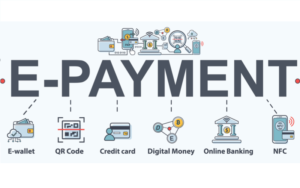What is e-payment

Picture credit to Powercash21
E-payments come with various methods, like credit or debit card payments or bank transfers. In general, e-payments are considered a fast and secure alternative to traditional payment methods, such as bank transfers, checks, etc. Accepting electronic payments comes with lots of benefits for both merchants and consumers.
How e-payment works?
Online payments are made instantly, so it’s convenient and saves lots of time.
When purchase online, buyer just need to key in certain information (e.g. card number, expiration date, CVV code, address) to complete the payment process.
Best e-Wallets in Singapore

Picture credit to fave
FavePay
FavePay offers two things that you can’t ignore is cashback and discounts!
This e-Wallet is the number one cashback app in Singapore because they allow you to earn 10% cashback on your next visit for the participating merchants.
The deals on FavePay are also incredibly generous. Which is between 5% to 30% and the promotions are ongoing. Which is why Singaporeans can enjoy as much as 70% in savings at the best restaurants, cafes, salons, spas, gyms, and much more!
DBS Paylah

Picture credit to Digital News Asia
After its introduction in 2015, DBS Paylah has over one million users now. It’s an e-wallet that has become a favorite with small merchants since it is can used to pay for transactions below $100, according to a study. So, you can use it at a hawker center!
PayLah! has now been upgraded to include even more useful functions directly within their app, such as purchasing travel and mobile phone insurance.
But Why e-Wallets?
- Using an e-Wallet allows you to keep track of your spending. Either to double check on your previous transactions.
- Any online transaction will provide receipts and these receipts are digitized.
- e-Wallets are also expected to help minimize wallet theft. You no need to keep a lot of cash inside your wallet.
- If your phone gets stolen, your e-Wallet is still protected. Mobile payments are more secure than other kinds of payments now. A lot the e-Wallet apps requires a PIN number confirmation before making a transaction. In some cases, they even use bio-metric authentication such as fingerprint or iris depending on the smartphone.
